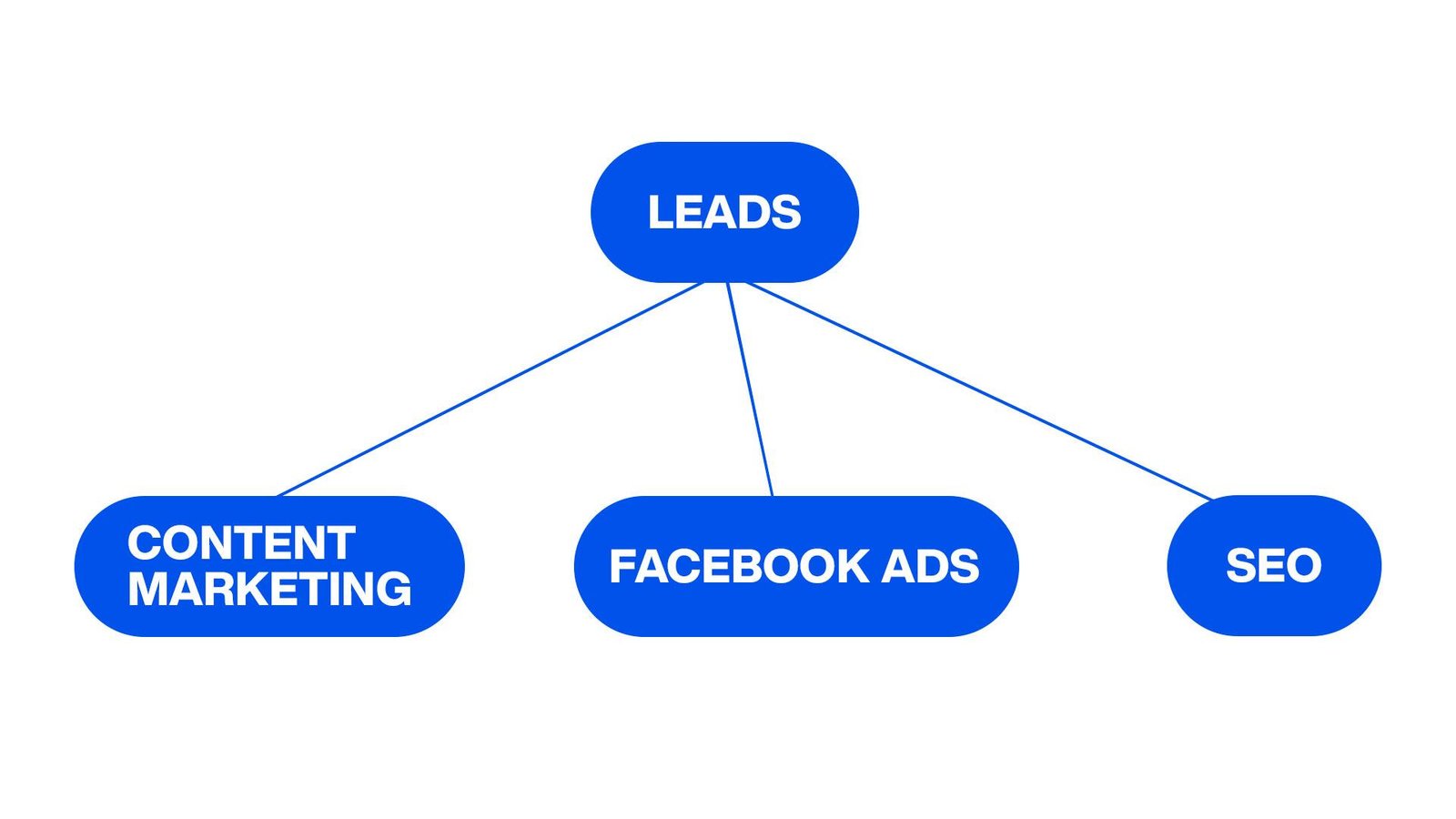How to Start a Graphic Design Agency: Lessons from the Pros
With the rise in remote work, many people have the idea of opening an agency with low costs and flexible hours. But this is not a task for everyone, in fact, most agencies close within their first year. Solomon Timothy, President of OneIMS and advisor to Forbes, points out the top 5 reasons for this failure.
Do you want to create your agency and don’t want to fail in the first year? Or rather, you don’t want to fail at all? In this article we separate the steps for you to open a successful agency, read below!

Table of Contents
Step-by-Step Guide to Starting Your Graphic Design Business
Starting your business requires detailed planning and strategy. Below you will find a step-by-step guide to setting up your printing agency and turning it into a solid business.
Choose a Business Name and Create a Logo
The first step is the simplest, choosing the name of your agency. It can be your own name, the name of a relative, the combination of initial letters or a number of things. The name of your company is what reflects your style, your services, your creativity and the image you want to convey to consumers.
From the name, the logo emerges. The logo is the symbol that identifies your brand, it is this symbol that will remain fixed in the minds of your customers. There are several types of logos, but we have a post that covers the 10 main types of logo and you can guide yourself there. Logos play a crucial role in helping people recognize your company. A well-designed logo not only creates a strong first impression but also reinforces brand identity, making your business memorable and easily identifiable.
Your logo and name will be used on all of your company’s marketing material and contracts. Make sure you choose a name that is memorable, simple and not too long. Think of a simple, memorable logo that avoids using too many elements or outdated designs from the 1990s. Sometimes it’s worth hiring an outside designer to produce your logo.
Register Your Business
Registering your business is a legal obligation. this involves applying for a business license and registering your company name with local and state authorities. The business structure you select, such as a sole proprietorship, LLC, or corporation, will determine the specific legal steps required for registration.
Additionally, applying for an Employer Identification Number (EIN) from the IRS is important for tax purposes, even if you’re a sole proprietor. Properly registering your business ensures legal compliance and helps avoid potential issues later on. For more details, visit the IRS website to guide you through the process.
Set Up Your Finances

The worst thing to do when opening a graphic agency is to neglect your finances. In fact, any business that doesn’t control cash flow will fail. Thinking about finances in the present will save you from many headaches in the future. Understand taxes and accounting for your business. Of the money that comes in, how much of it goes towards paying taxes, paying for work software and fixed costs? The first step is to understand your operational costs. Once you know your net profit, you can reinvest a portion in your business and take a smaller portion for yourself.
You should hire an accountant who already has the necessary experience. If it’s out of your budget, explore accounting programs and find out about books, videos and podcasts about finance. Keep control of your money and don’t spend more than you earn.
Build a Portfolio
A portfolio is a powerful tool for any design or marketing professional. All clients will initially ask about your portfolio. If you want to open your design agency, you’ve probably worked in design in the past. Review all the work you have done so far, all projects and demands. Compile your projects into a presentation format document, such as PowerPoint, for example. Separate the projects and create small texts describing each step you took in your designs.
If you don’t have any work done and so far you’ve only created designs as a hobby, gather everything you’ve done so far and catalog it in the same way. Another option is to work for a few months as a freelancer or collaborate with other designers to build your portfolio.
Your agency portfolio should showcase your skills, the type of work and the style you adopt. It must be accessible material, so use sites like Behance that we mentioned earlier, or Dribbble to promote your work online, but also have your portfolio in PDF format. A good portfolio will attract the attention of potential consumers.
Set Your Prices
When you’re starting out, knowing how much to charge for services can seem difficult. Define what your specific services will be and what your agency will do. Then research how much agencies charge for the same things that your agency will offer. Now consider the time it will take and the tools you will use to meet a customer’s demand. The value of your service must include the value of the tools, your working hours and your level of experience. To make it easier, try charging 20%-30% less than your competitors.
Offer at least three different service packages, one with the lowest price, one with the average price and one with the highest price. As time passes, you will be able to charge more for your services.
Find Your First Clients

Finding your first customers is perhaps the most challenging task. If you’ve worked as a freelancer in the past, this can help you look for new clients. Create a profile for your agency on Behance, Dribble, and other freelance platforms to find new work. You can also contact your co-workers and bosses if you worked in a fixed location before.
Tools like online ads on Meta platforms (Facebook and Instagram) can help. Create profiles on social media and create posts about day-to-day life at your agency and the work you are currently developing. Don’t forget to advertise on browsers like Google. Contact your network; the people you know and your family can be contacts to explore.
To increase your online visibility, create a Google Business Profile. This will help your company appear organically on Google, the world’s largest search engine. Create a clear description of your services and offer different contact channels such as telephone and email, in addition to linking your website.
Consider specializing in a specific niche of clients. Then, visit local businesses and offer your services directly to managers or owners.
Develop Client Contracts

Contracts are essential for protecting both you and your clients. They clearly outline the scope of work, deadlines, payment terms, and any additional legal protections. A clear contract helps prevent misunderstandings and makes sure both parties agree on everything during the project.
You can create your own contract template or hire a legal professional to draft one for you. Be sure to include sections about revisions, who owns the work, and how the contract can end. These can help prevent problems during the project.
Deliver Quality Work and Get Paid
The quality of your work will determine your success. The market is filled with companies that miss deadlines, fail to deliver as promised, or even don’t deliver at all. By consistently delivering on promises and meeting deadlines, your agency can stand out from the competition.
An agency that works well and delivers good results will receive numerous recommendations, as well as positive comments and reviews on their profiles on social media and Google. Businesspeople know other businesspeople, serve a company well and its owner will recommend you to his friends.
Your invoices must be clear and contain information about the services provided, use a payment platform or talk to your bank to send your billing method at the correct time. Never make it difficult for your customer to pay.
Building a Team or Going Solo?
As a business owner, you’ll need to decide whether to build a team or work solo. Both options have pros and cons, so consider your goals and working style to make the best choice.
Pros and Cons of Teaming Up
A team allows you to handle larger projects and offer more services. With more people, you can manage multiple clients. However, managing a team requires more responsibilities, like paying employees, coordinating work, and ensuring quality.
Going Solo
Working alone gives you more creative control and flexibility. You set your own pace and keep all profits. However, handling everything on your own can be challenging, especially as you grow.
Finding the Right Suppliers and Partners
Building relationships with reliable suppliers and partners is essential for success. Whether you need printers, developers, or marketers, finding trustworthy professionals will enhance your services. Check Behance for designers.
Attend industry events, join local groups, and network to build these relationships. Trusted partners help you expand your offerings and ensure projects are delivered on time and within budget.
Managing Finances and Setting Realistic Goals
Effective financial management and setting achievable goals are crucial for a successful graphic design business. A clear financial strategy helps you stay on track and grow sustainably.
Budgeting for Your Business
Create a detailed budget to maintain financial health. Calculate monthly costs, including software, marketing, and outsourced work. Compare expenses to expected income to ensure you’re not overspending and can plan for future investments. Regularly review your budget to adjust as your business grows. Closely monitor cash flow to make informed decisions about expanding services or hiring staff.
Tracking Time and Expenses
Tracking the time spent on projects and your expenses is key to good financial management. Time-tracking tools help you keep an eye on how long tasks take, ensuring you bill clients accurately. This also helps you assess your productivity and identify areas for improvement.
Keeping detailed expense records is important for claiming tax deductions and ensuring your financial reports are accurate. This practice helps you manage your business more effectively and avoid issues during tax season. Many accounting software programs have built-in time and expense tracking features, which makes it easier to manage everything in one place.
Invoicing Clients
Professional invoicing is essential for smooth business operations. Use invoicing tools, like Freshbooks to create clear invoices with services, payment terms, and deadlines. Prompt invoicing and clear communication build strong client relationships and ensure timely payments. Offer multiple payment options for convenience. Send friendly reminders for unpaid invoices to maintain healthy cash flow and avoid delays.
Creating Professional Proposals and Communicating with Clients
Effective communication and well-crafted proposals are crucial for attracting clients and building trust. A professional proposal not only outlines the project scope but also demonstrates your professionalism and attention to detail. Engaging clients throughout the process ensures a smooth working relationship.
Writing Clear and Transparent Proposals
A strong proposal sets the foundation for a successful project. Clearly define the scope of work, timeline, and pricing. Transparency is essential—clients need to understand exactly what they’re paying for and when to expect deliverables. Avoid jargon and keep language simple to ensure clarity.
Include clauses addressing revisions, payment terms, and deadlines to prevent misunderstandings. A well-structured proposal showcases your professionalism and builds trust with clients from the start.
Engaging Clients in the Process
Involving clients throughout the design process strengthens relationships and manages expectations. Regular updates, feedback, and their participation in key decisions keep the project on track and aligned with their vision.
Open communication makes clients feel involved and confident in the outcome. This minimizes revisions and disputes, as clients are part of the decision-making process at every stage.
Common Challenges and How to Overcome Them
Running a graphic design business presents challenges, such as managing client relationships and balancing creativity with business management. Overcoming these obstacles is crucial for long-term success.
Balancing Creative Work and Business Management

Many graphic designers struggle to balance creative work with business tasks like invoicing, contracts, and marketing. Neglecting business aspects can hinder overall success.
To manage both efficiently, consider using project management tools and time-tracking software. Automating tasks like invoicing and setting aside dedicated time for business management can help you balance creativity with administrative responsibilities.
Learning to Say No
As your agency grows and attracts new clients, you may encounter projects or clients that don’t align with your company’s vision. While it’s recommended to start with lower rates than competitors, avoid accepting excessive work for minimal pay. Say no when you come across a proposal that is not good for your company, that is, proposals that demand a lot and will not give you that much return.
Keep in mind that there are many clients who are disrespectful or do not understand the necessary work process. Say no to these customers, they will certainly occupy your mind in a negative way and may evaluate you poorly.
Saying no to certain jobs will give you enough time to dedicate to clients that really matter. In addition to maintaining your agency’s focus on delivering quality services.
Final Tips for Growing Your Design Business
Like any business, growing your design agency will take time and a lot of effort. Nothing lasting is built quickly, a tall building needs a very deep foundation, just like your company. Stay focused on your goals and serve your customers well, don’t think too soon. Your business needs to grow organically and solidly, which may take some time, so be patient.
Stay Focused on Growth
Continuously evaluate your business direction and set realistic growth goals. Whether it’s acquiring more clients, increasing revenue, or enhancing your skills, focusing on growth keeps you competitive. Stay updated on industry trends and seek ways to improve your services.
Continuously Look for New Clients
Client acquisition is ongoing. Even with a steady flow of work, actively seek new opportunities. Expand your network, leverage online platforms, and maintain an active social media presence to reach new audiences.
Good service and asking satisfied clients for referrals helps build a strong reputation. This alone will attract new clients for your agency.
Nova Chicago is an Agency that helps businesses and personal brands attract high-paying clients through design and strategy.
Quick Links
Get In Touch
- Email: Contact@novachicago.design
- Phone: +55 (84) 99854 3058
- Hours: Mon-Fri 9:00AM - 5:00PM
